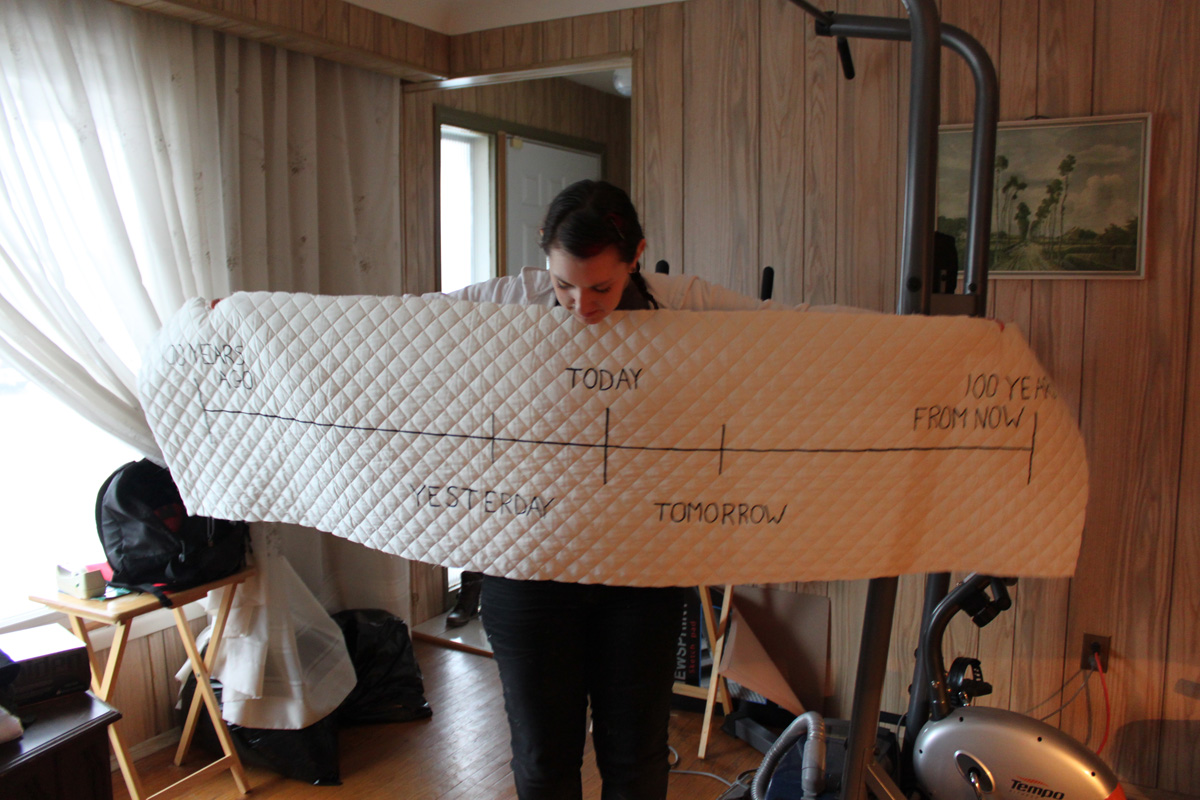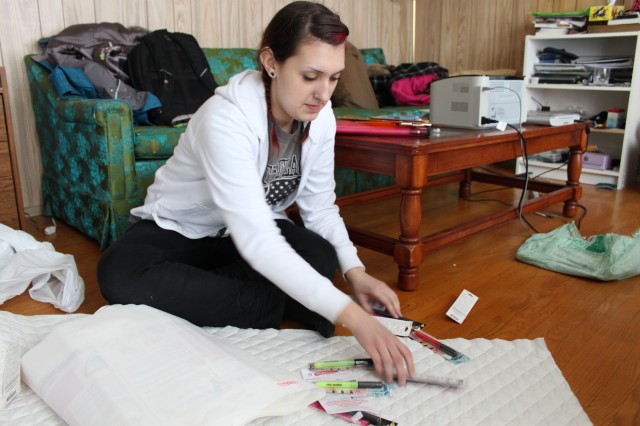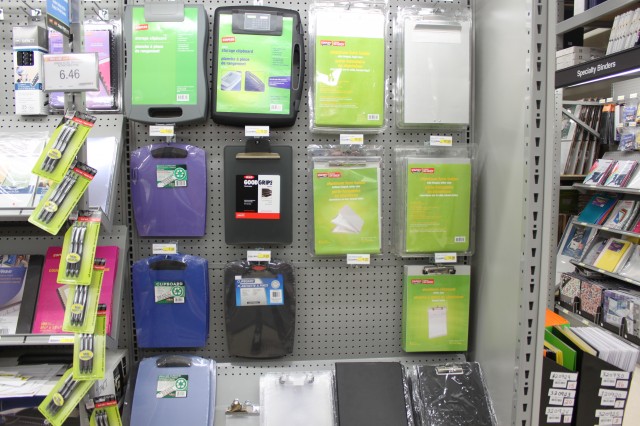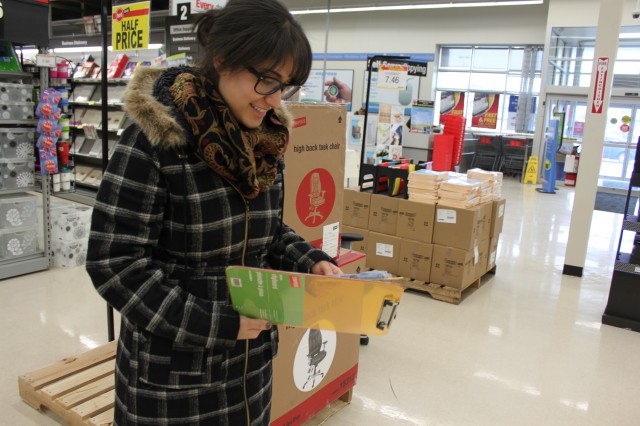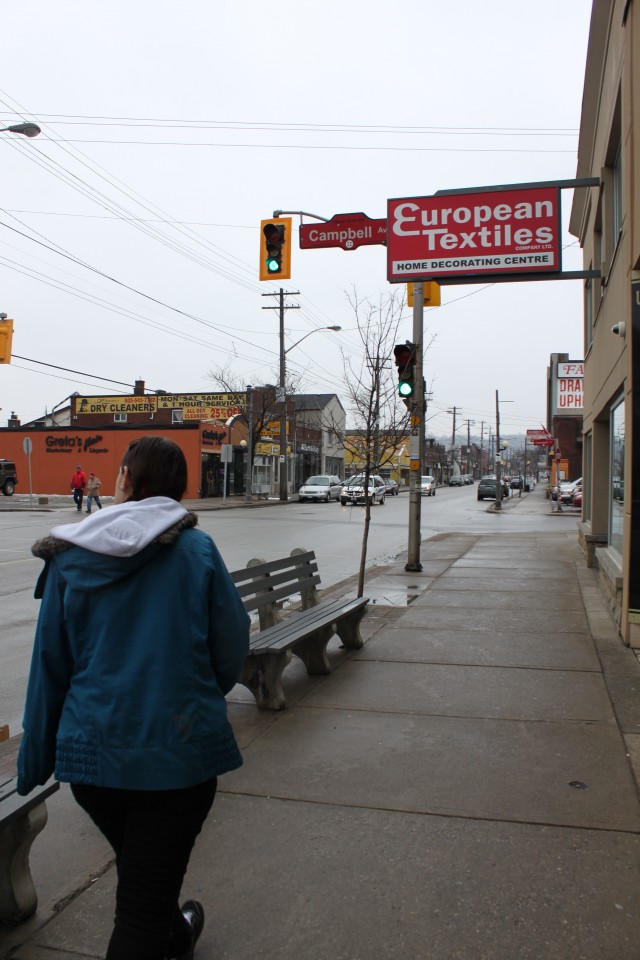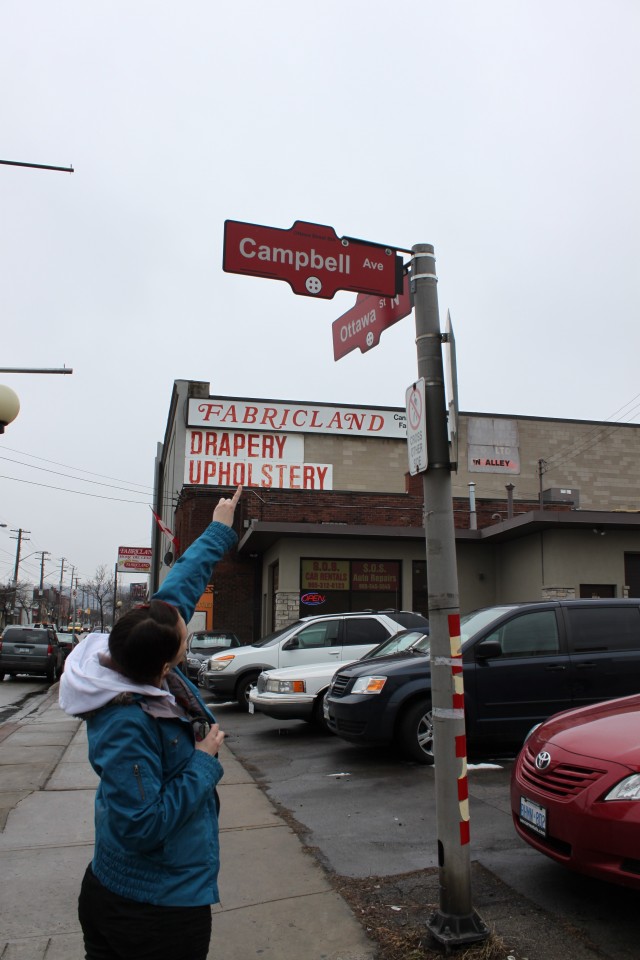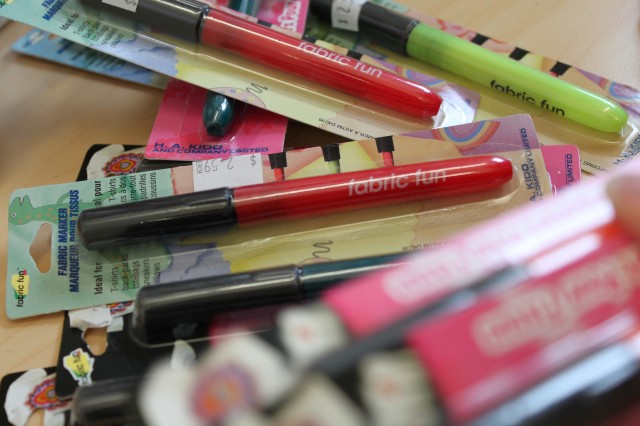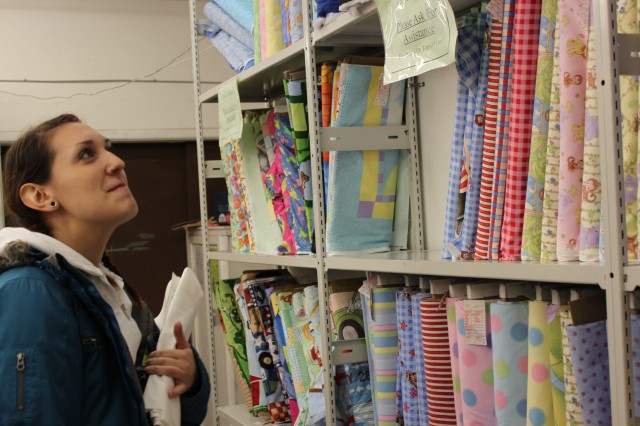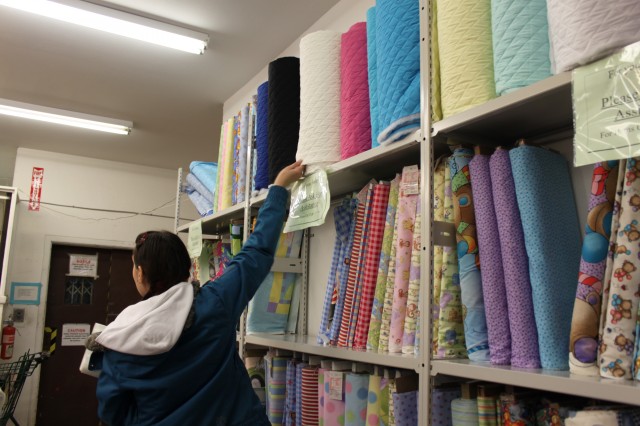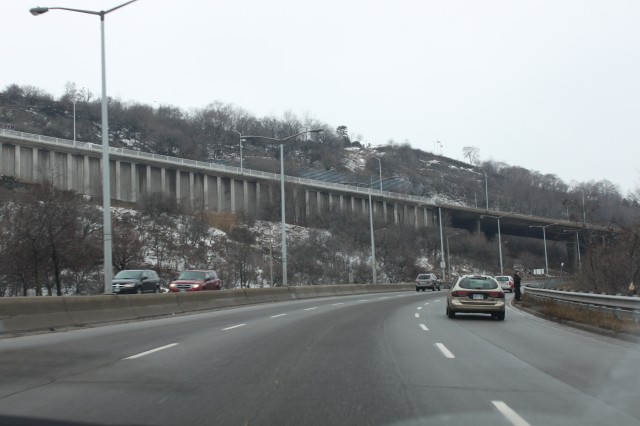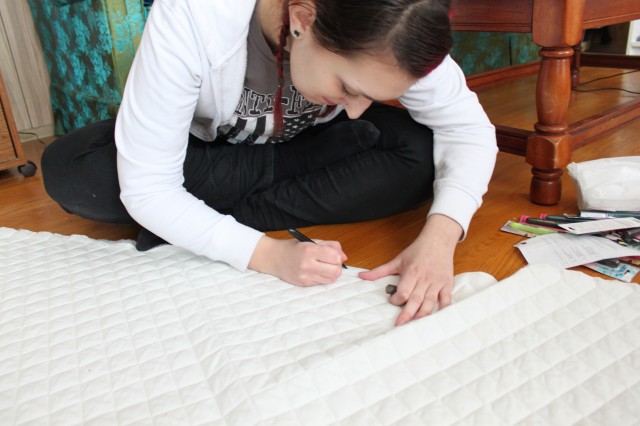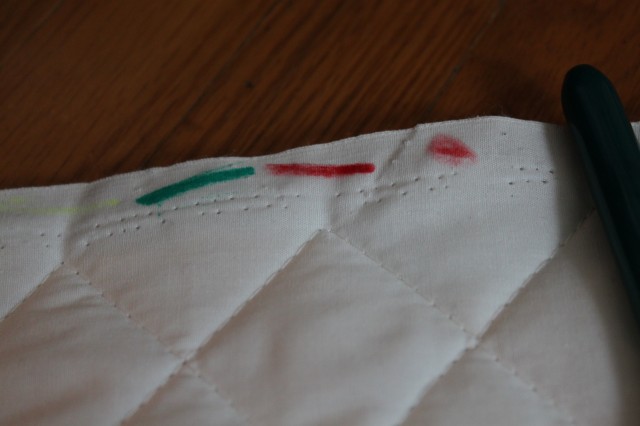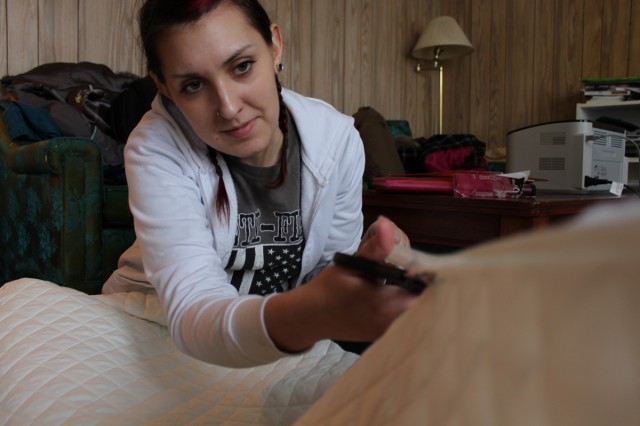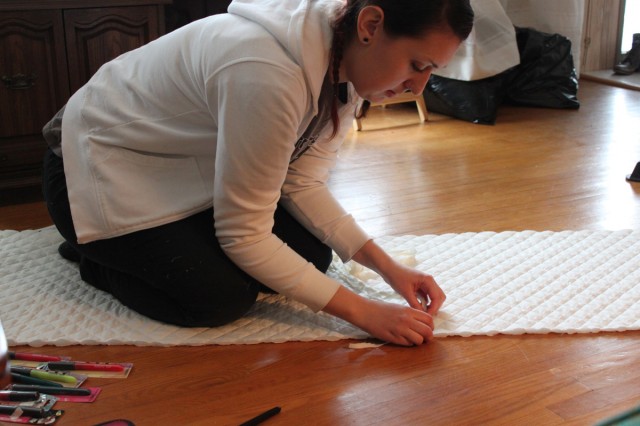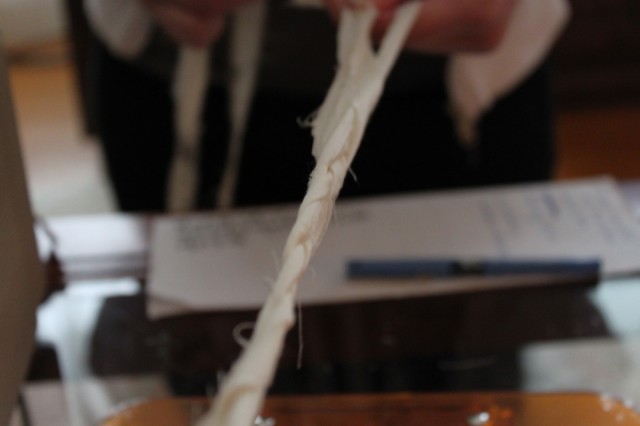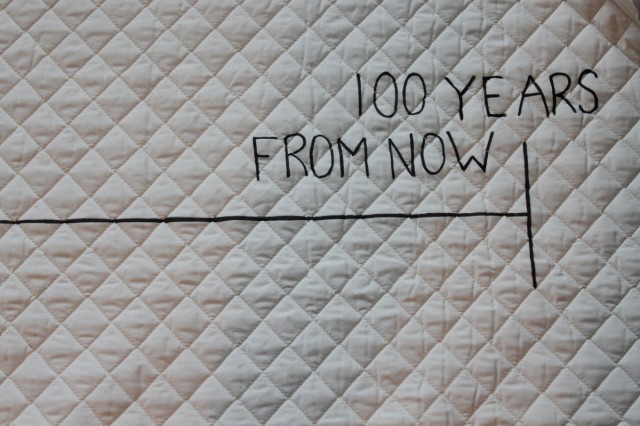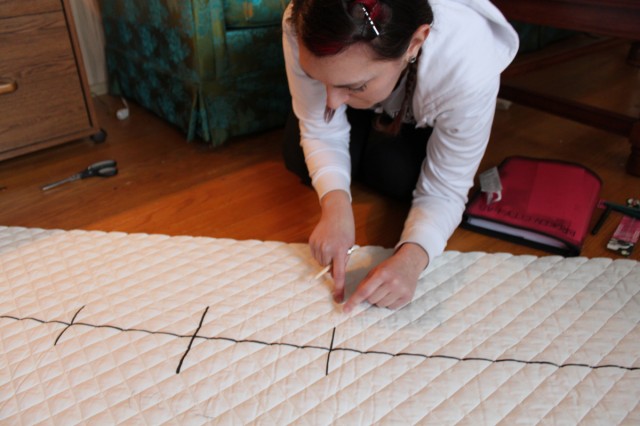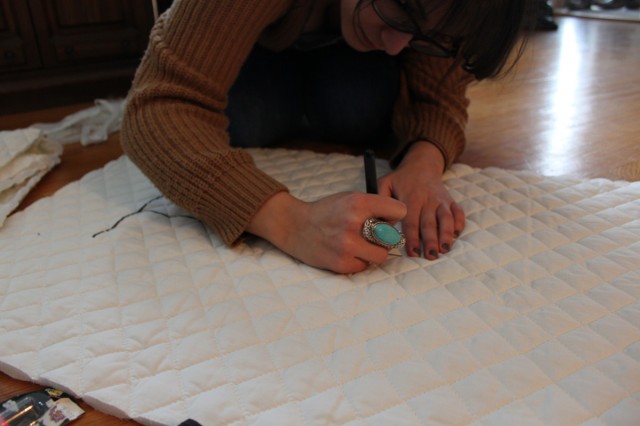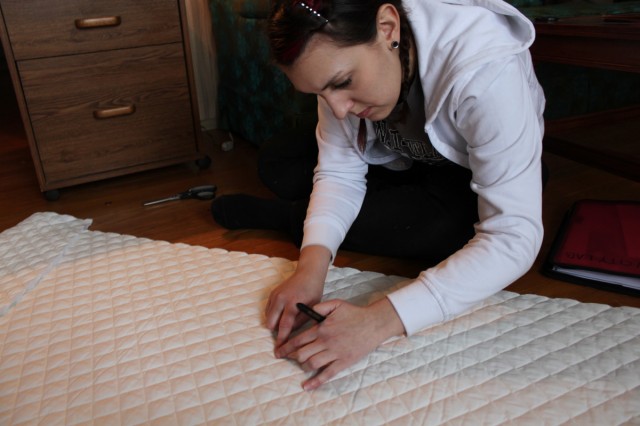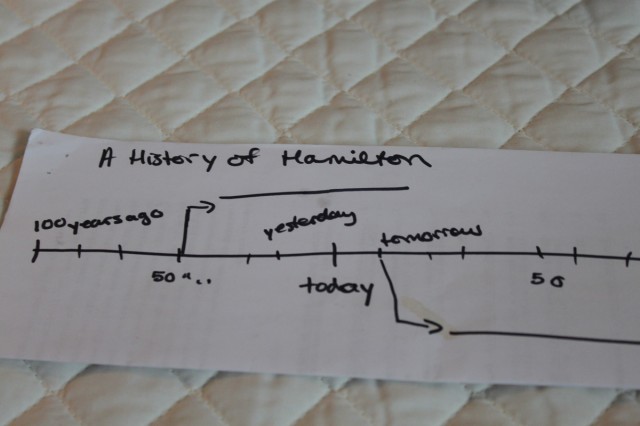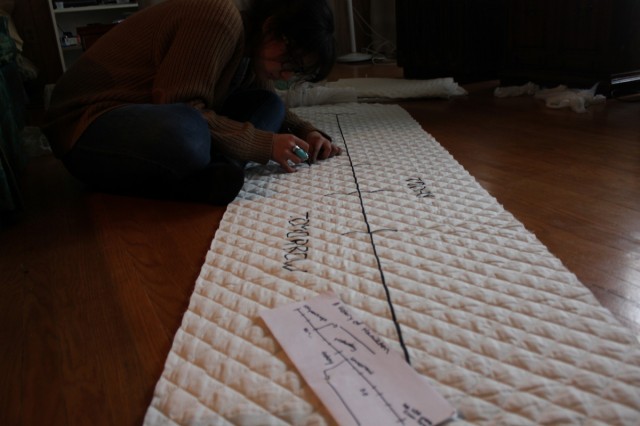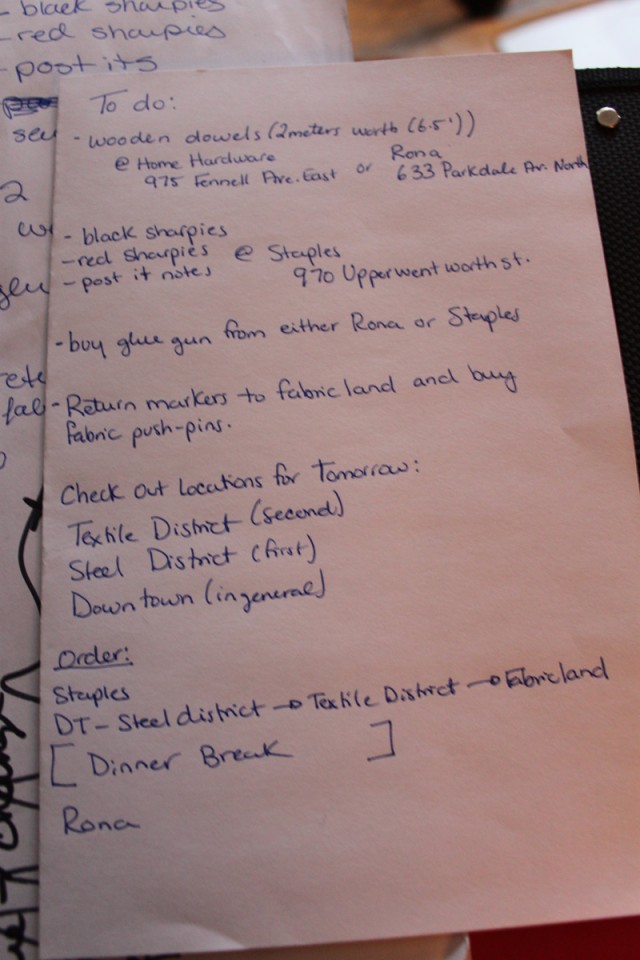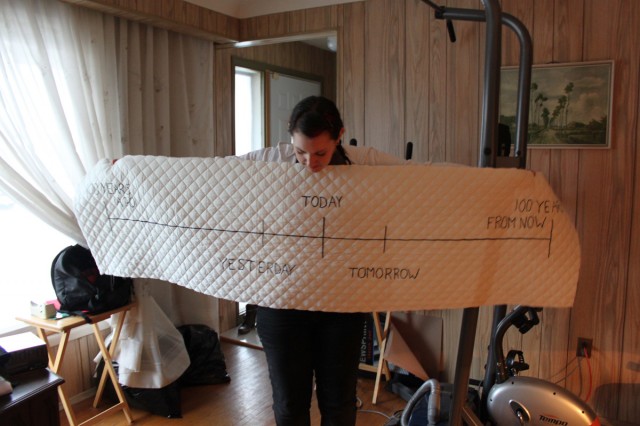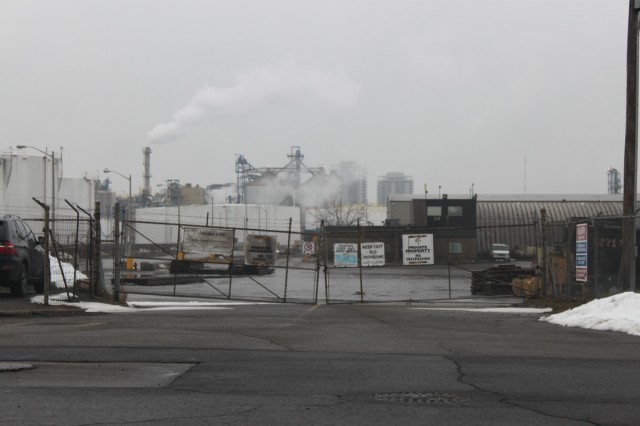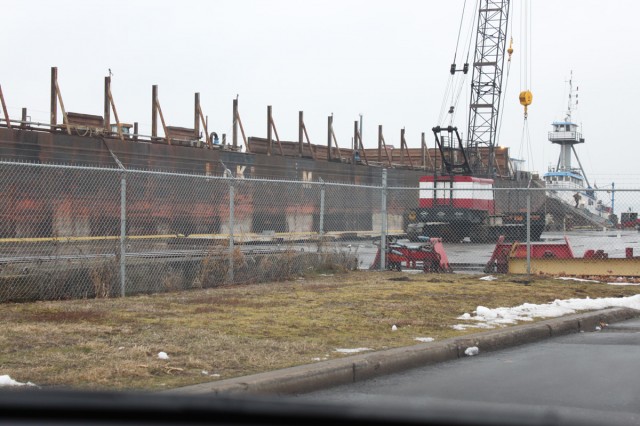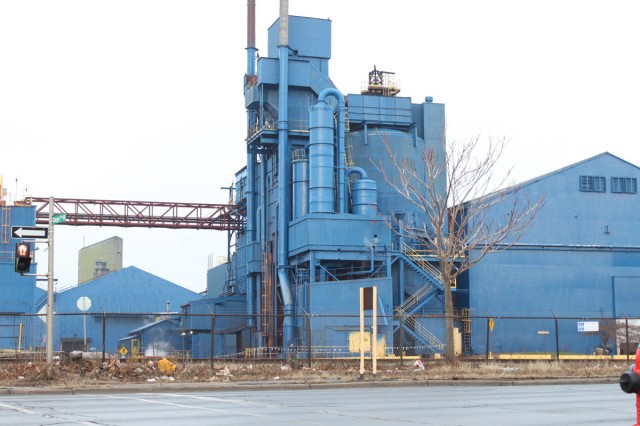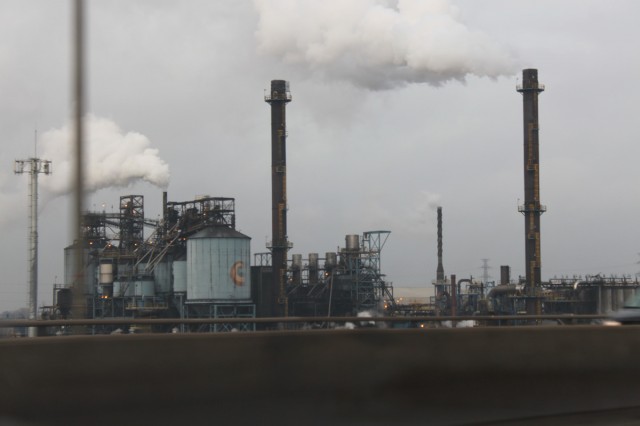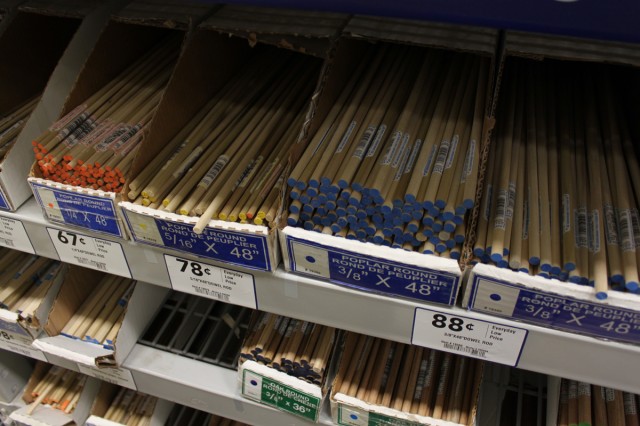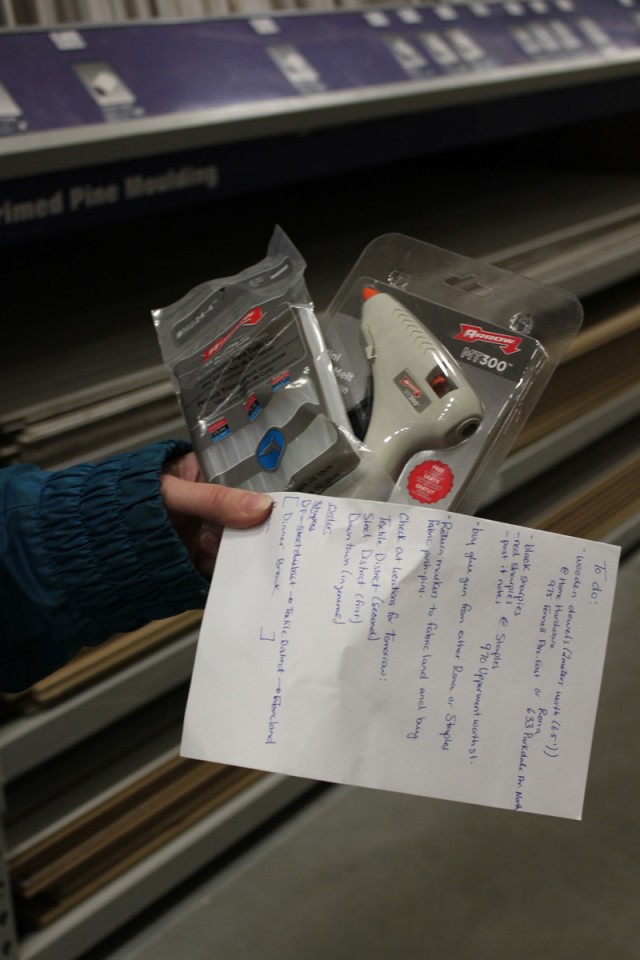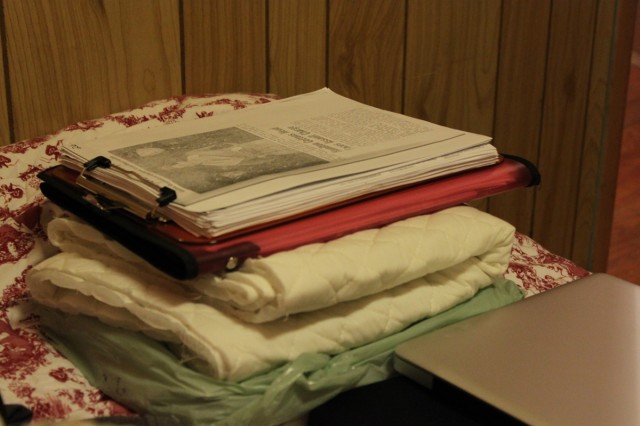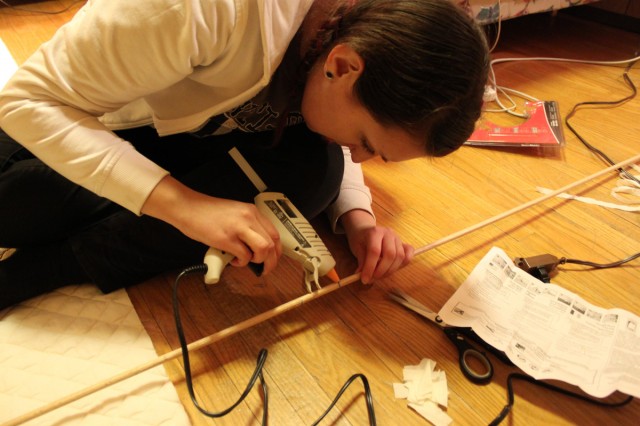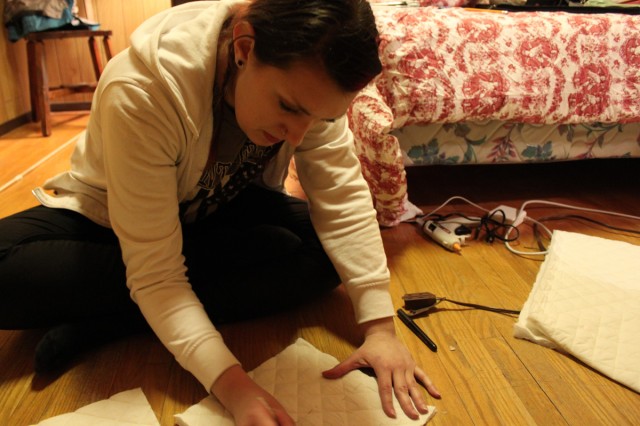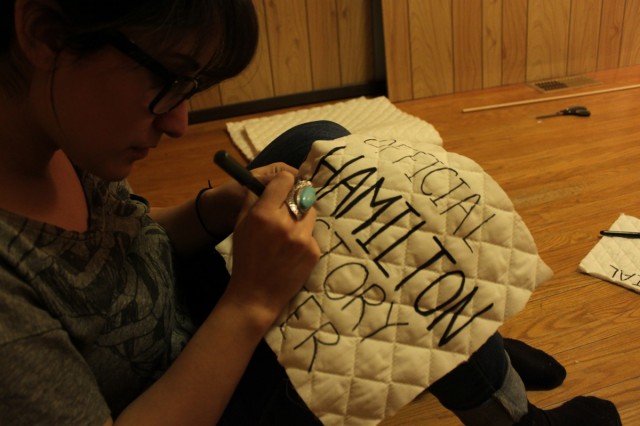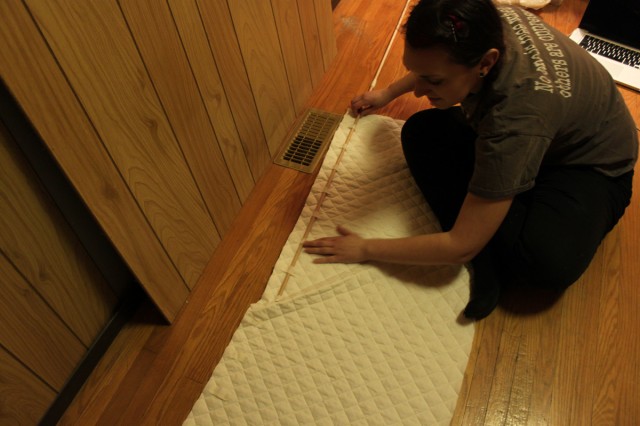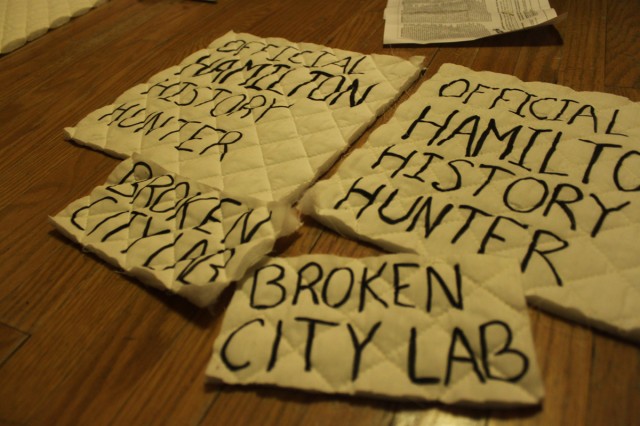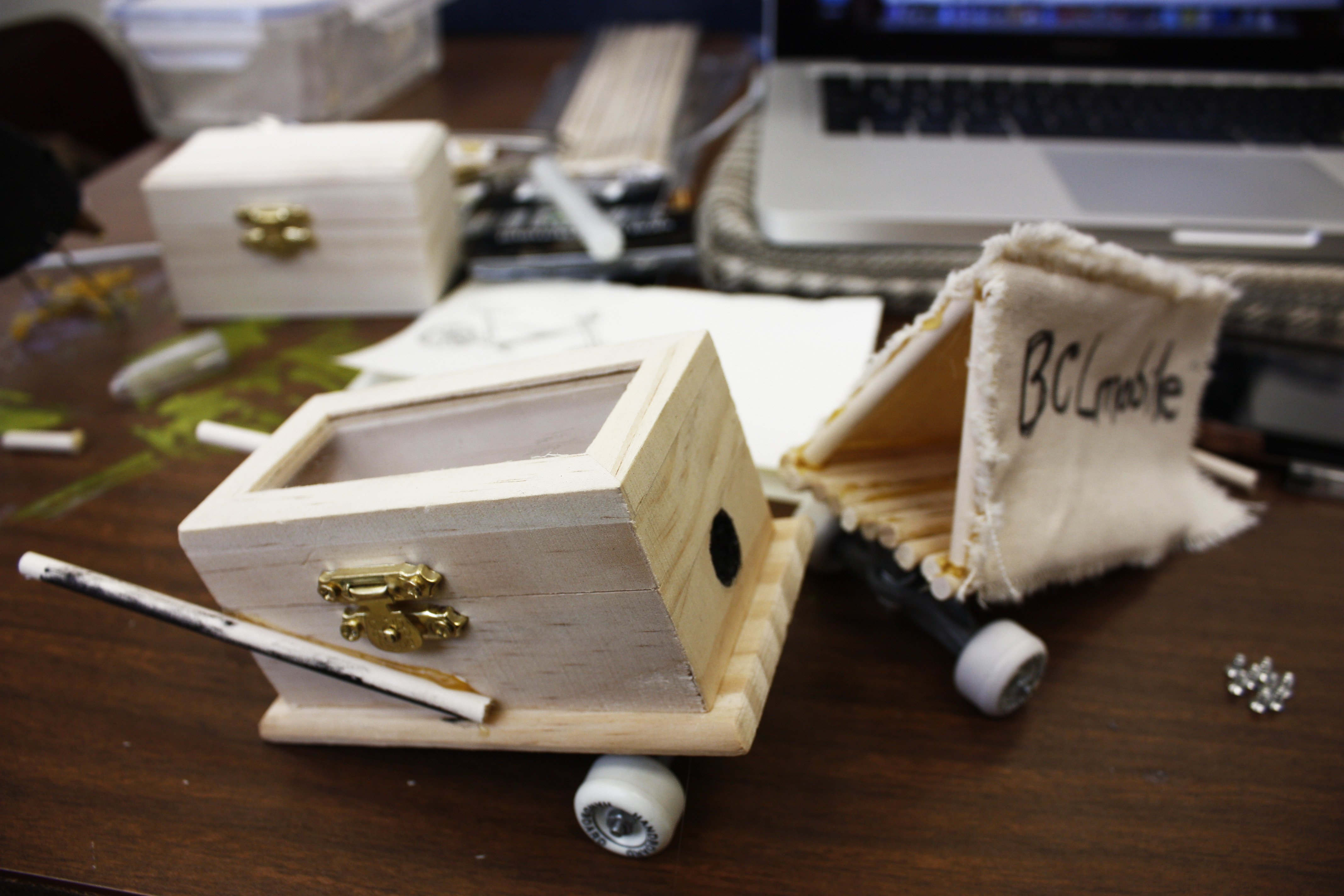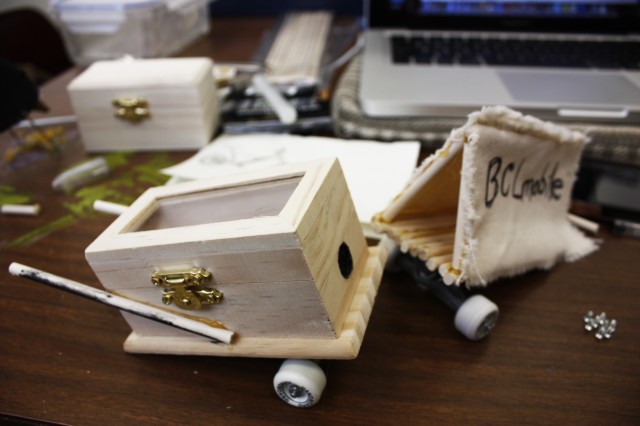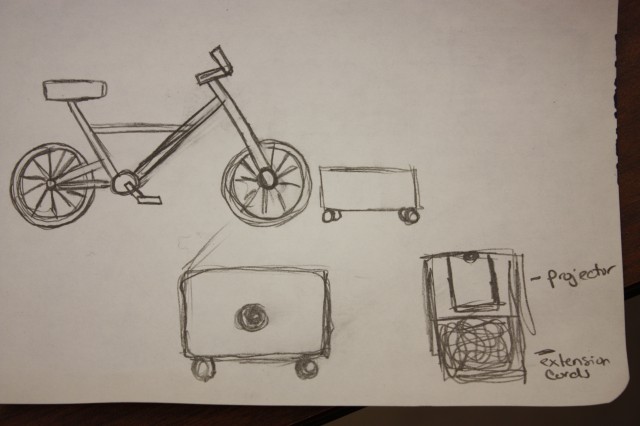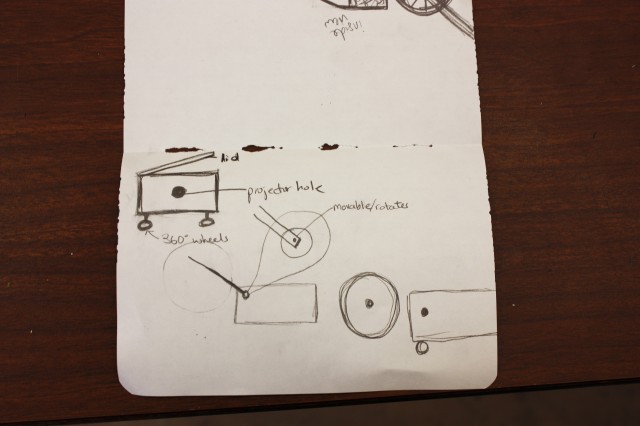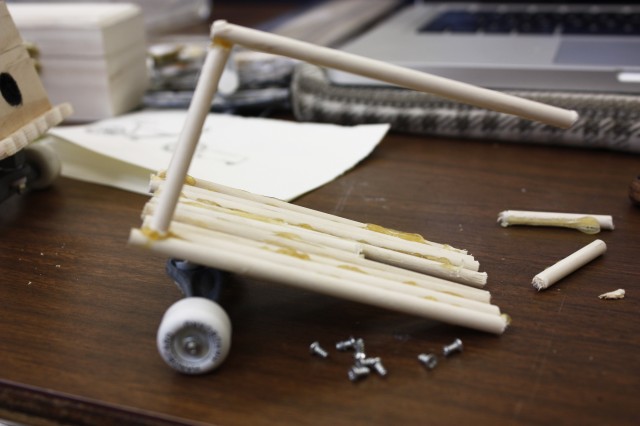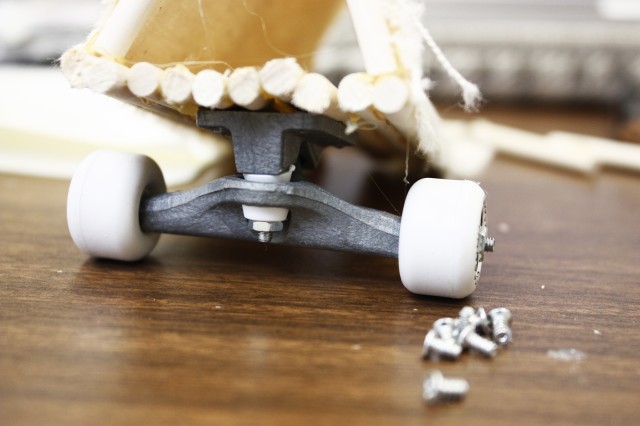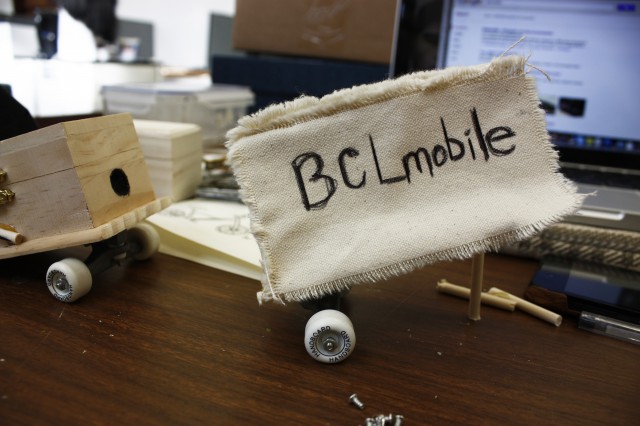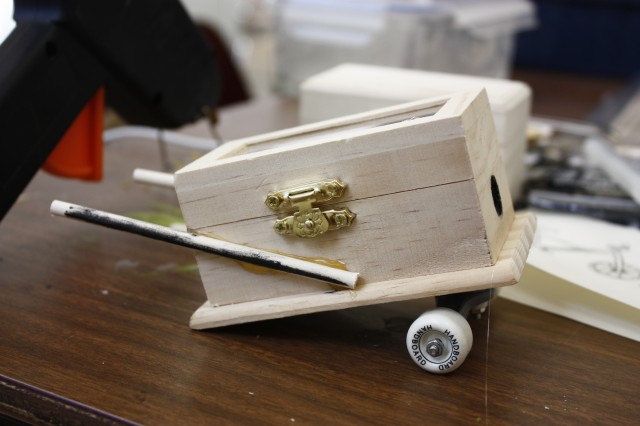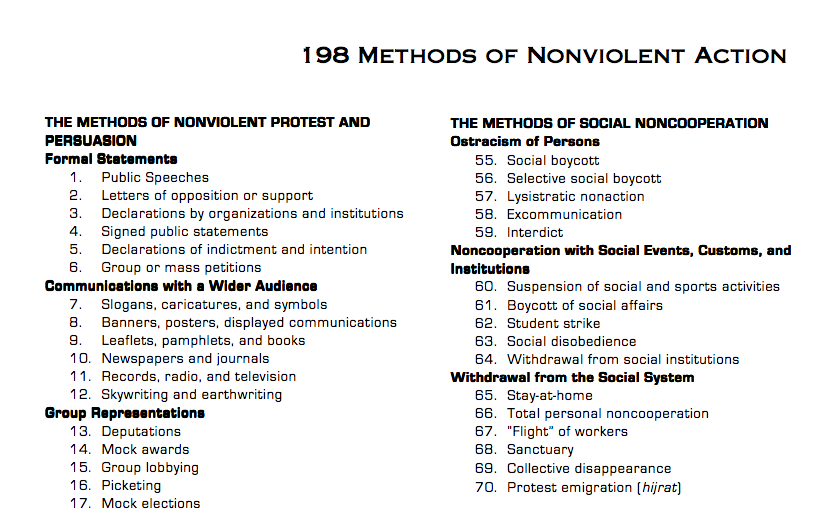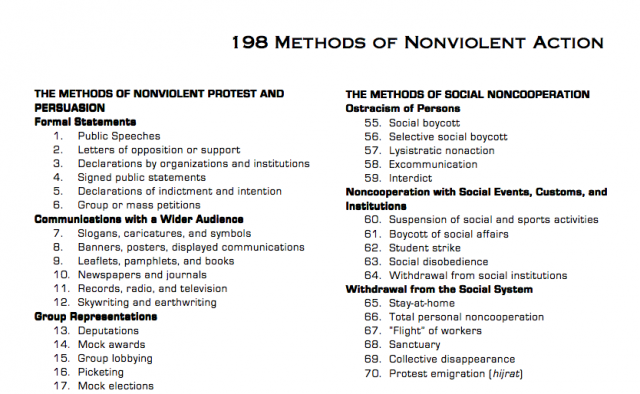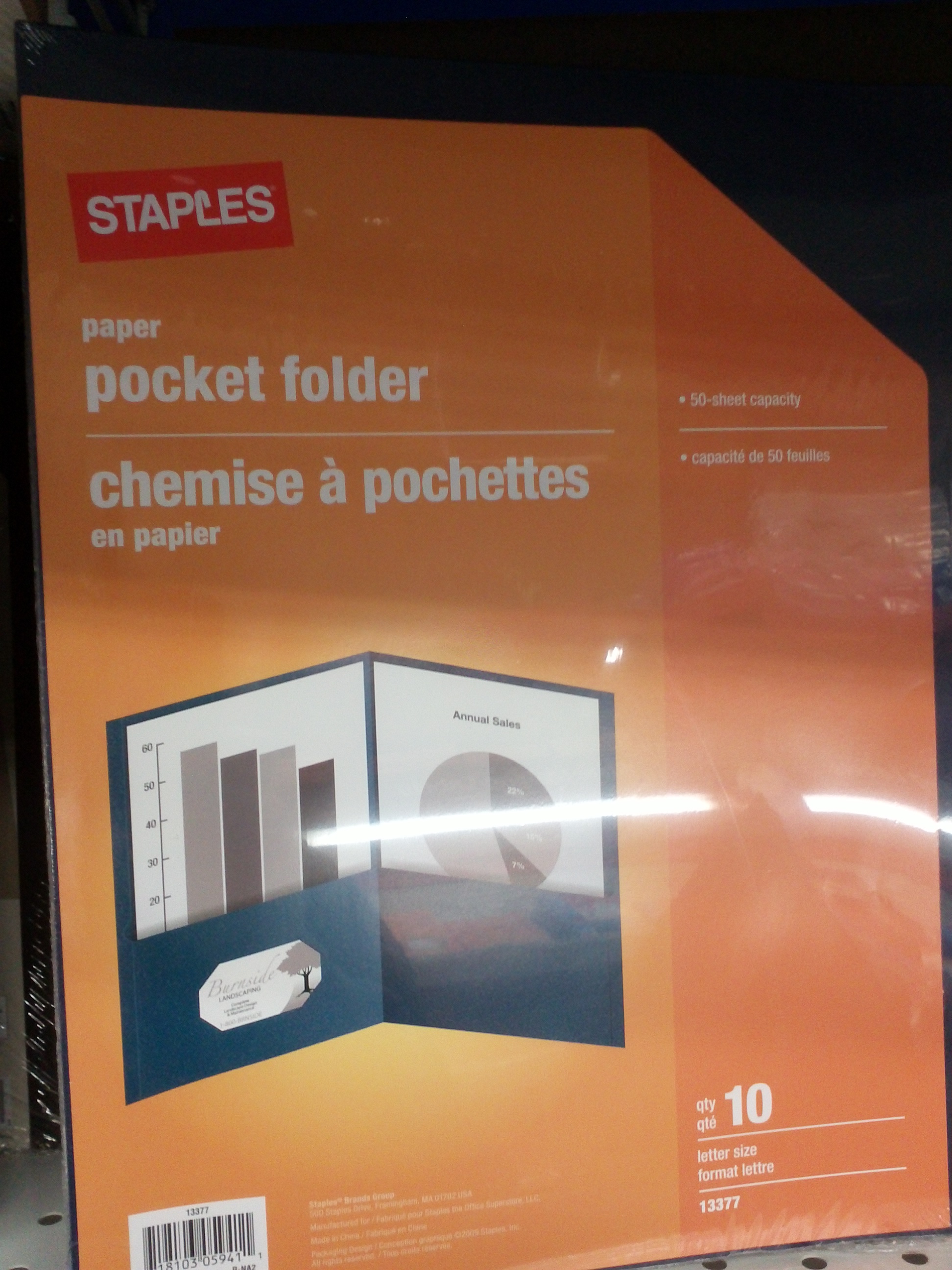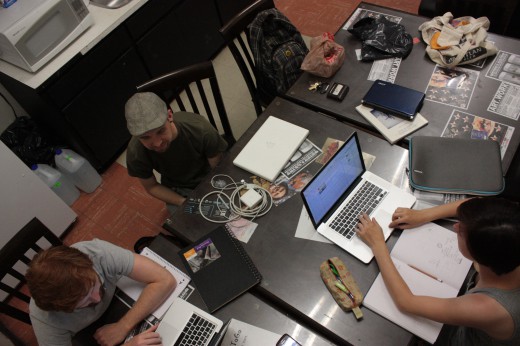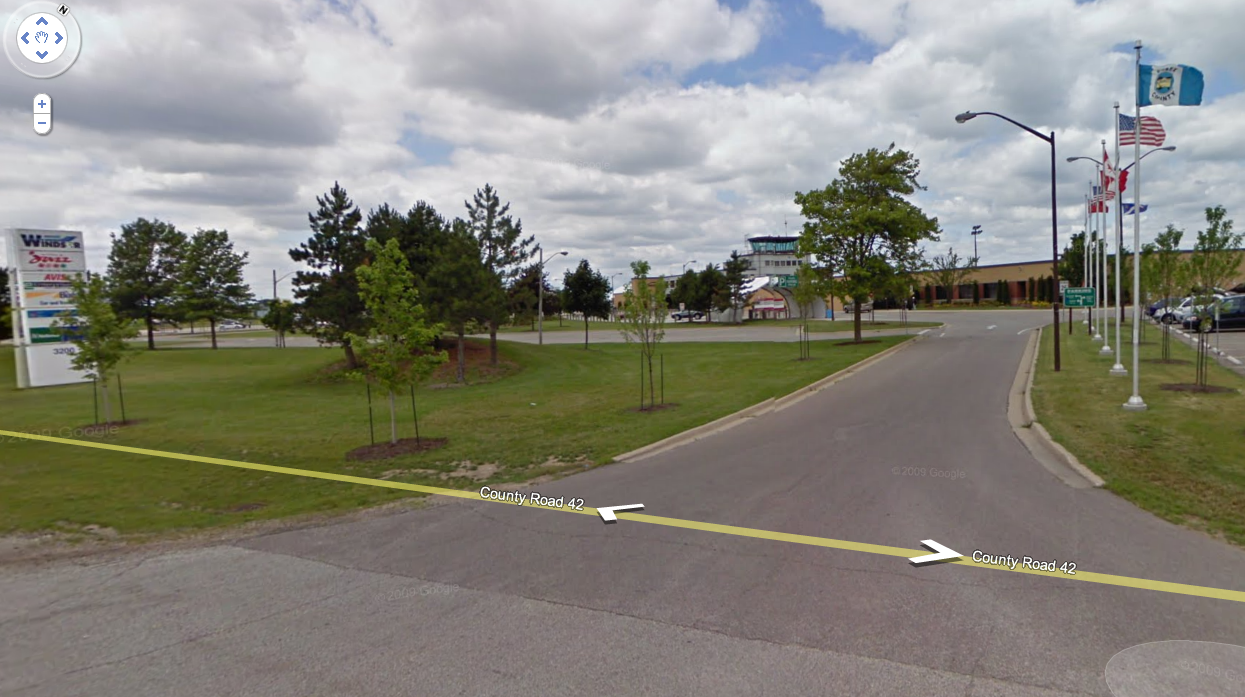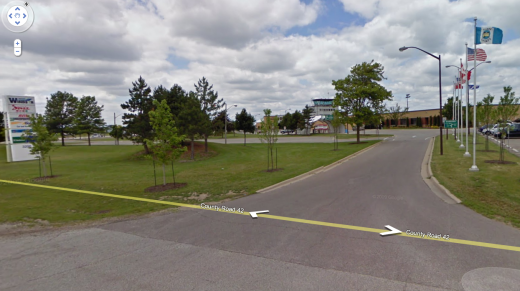Michelle and I headed up to Hamilton to continue the research portion of Two Tales Of A City. The three and a half hour car ride gave us plenty of time to develop a working plan of exactly what we wanted to accomplish for the next two days in Hamilton, Ontario. To get a better understanding of the history of Hamilton, we thought that making a community timeline would be a great start. Along with that, we would pass out photocopied newspaper articles pertaining to the steel, textile and francophone history of Hamilton for people to highlight and circle the most important parts.
But first, we needed the right tools.
At Staples, we stopped to buy a clipboard, some markers, post-it notes and some kind of paper/board/foam that was long enough to build a time-line.
After some discussion and selection of this awesome yellow clipboard, we decided that for a time-line, it would be much more suiting to use fabric! We thought that playing on the textile history of Hamilton would make for some interesting discussions and story-sharing.
Next, we headed off to the textile district on Ottawa Street to seek out a fabric markers and of course, fabric.
Michelle noticed that all the street names in the textile district had little buttons on them. Neat find!
Inside Fabricland, we sorted through to find the colours to use on the timeline.
Then went on to find the perfect fabric.
Found it.
After gathering our supplies, we headed to the upper part of Hamilton, where Irene lives, to start making our timeline. Above: the escarpment.
At Irene’s, we started the construction of the timeline. Here’s Michelle testing out the fabric markers.
The black worked out really well. Sadly, the colours shown above, barely showed up.
We decided that we would return the colours and look for a different alternative. Michelle thought that pinning post-it notes with text written on them would look better than writing on the timeline itself, similarly to what was done in Calgary.
Cutting straight lines.
Since the timeline is made out of fabric, we had to consider how we could hold it up and keep it sturdy enough to resemble a sign. Michelle took some scrap fabric and started braided it as an example for some kind of reinforcement to place on the back of the timeline. The discussion led us to believe that adding wooden dowels as support would be the answer.
Close up of the timeline.
Marking the date of “yesterday”.
Using black fabric marker to create some thick lines.
Since the fabric had the quilt squares on them, it made it a lot easier for us to measure across and mark the lines.
Mock up sketch of the timeline.
Inserting key words.
Again.
After that section of the day was done, we wrote out a schedule that dictated how we would spend the rest of our night. We decided that there were some new materials to buy and that we should visit the sites in the textile and steel districts where we would want to set up our timeline.
Michelle with the timeline.
We drove through and around the steel district that is located along the bay area in Hamilton. By car, we encircled the factories and felt how empty this part of the city was compared to the rest.
A lot of the places we drove by were heavily fenced off with multi signs reading “No Unauthorized Entry”.
We realized that the steel district would not work very well for gathering information because there were nearly no pedestrians walking and no way we could gain access to the factories.
Industrial steel factories.
Next, we stopped at Lowe to pick up some wooden dowels.
Glue gun, glue sticks, to-do list.
Our stack of supplies.
We bought 2 dowels that were 3 feet long each. We decided to glue them together so that they would span the width of the timeline.
As we worked through the evening, we discussed how best to approach the people of Hamilton. We decided that the more friendly and harmless we seemed, the more willing people would be to talk.
We came up with the “Official Hamilton History Hunters” as a badge to wear on our jackets, stating our intentions as we take to the streets.
Running the dowels through the back of the timeline.
Above: Back patch as well as front “Broken City Lab” badge.
We head out into the city tomorrow! Stay tuned for more.
